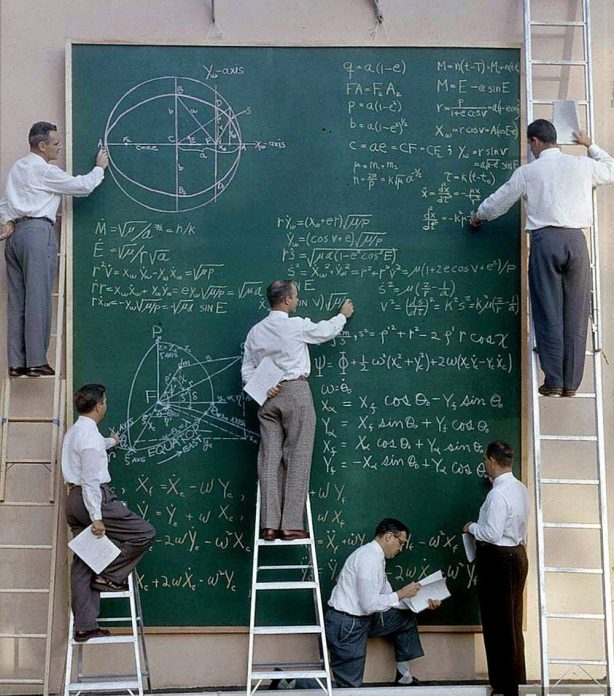seeing science
launched in September last year, Seeing Science is a year-long project at the University of Maryland that examines and documents the ways in which science is represented through the visual medium of photography
with online platforms, essays, events and exhibitions, the project looks at the ways in which science is represented as an industry and as an academic subject; the people involved and its myriad interactions with our everyday life. from Eadweard Muybridge's pioneering studies of animal locomotion to NASA's rich photography archive through to augmented reality goggles for surgeons, Seeing Science seeks to examine the various forms scientific images take, what they reveal and how they transform the disciplines they serve. Bobby Jewell spoke with the project's curator and producer, Marvin Hieferman, to find out more
Amongst other things, Seeing Science examines the macro and micro elements of the universe that photography has put into perspective. Is there a particular image that always resonates with people the most for putting humanity in perspective, as it were?
The science photographs that speak most powerfully to viewers differ from over time. In the late 19th century, the first X-rays startled people into rethinking their own physicality and mortality. NASA photographs of the Earth seen from space, like the watery and serene one dubbed The Blue Marble – one of the most widely reproduced and transformative images ever – radically changed our perspective on our place in history and the Universe. A more recent but equally spectacular photograph taken by the Cassini spacecraft through the rings of Saturn also shows the Earth from space, but this time it’s barely visible: just a tiny speck far, far away. If that doesn’t get you thinking about humanity, nothing will.
One part of Seeing Science looks at how scientists are portrayed in the media. What have been the most ridiculous and most accurate fictitious portrayals of scientists?
Oliver Wasow’s year-long project, Picturing Science, is the best place for both those kinds of pictures—from movie stills from science biopics to at-work portraits of scientists in their labs or of kids dressed up as Albert Einstein on Halloween. One recent news story about pictures of scientists that really struck me described how a 2001 publicity still from an actors’s one-woman show about Marie Curie has actually been used on a number of postage stamps around the world.
You've chosen to make Seeing Science very much an online focused project - what was your reasoning behind this?
Making Seeing Science a largely online project allowed us to take a much broader look at the subject than we could have if it were presented it as an exhibition in either an art or science venue. The online platform lets us build the project over time and to respond to how current events in the sciences are depicted, as they unfold. We can look at science imaging and visual culture form all sorts of angles and reach a wider audience than an onsite project ever could and do all that cost-effectively. We’ll be doing a book based on the project next year, which I’m excited about because it will reach yet another audience.
With fake news being such an emerging trend in online platforms, how do you retain the (relative) objectivity of a visual mediums in the era of Photoshop?
Objectivity, and photography’s evolving role in defining that, is central to the project. What’s interesting, though, is that photographic objectivity, at any given time, has always been limited by the parameters of the medium itself. So for a while, black and white images seemed objective. Then X-ray and colour ones did, and now it’s common practice to combine multiple types of image capture together to create stacked images or composite ones, like the Hubble’s spectacular Pillars of Creation image. The point is we can only see as much in pictures as we’re able to record in, account for, and understand from them. If manipulating images once seemed blasphemous, today it’s a commonplace way to visualise or extract complex data from photographs.
That question links in with another aspect of Seeing Science: the importance of the viewer and their interpretation. Are there any lessons on how one should observe images scientifically or any particular 'ways of seeing' viewers should use?
How we see and respond to images always depends upon where and how we encounter and, even more, what we see in and take away from them. That’s what Seeing Science is all about and that’s what separates it from more conventional science photography projects. We want viewers to appreciate the range of science-related imagery made, the breadth of techniques employed over time, the mind-blowing content and the various audiences that have been reached or are targeted. Photographs in the project are made by scientists, policy shapers, marketers, artists, journalists, and storytellers. As imaging, technology, and the sciences intertwine and are increasing embedded in daily life, the time seems right to look at how that works, what it means, and from the broadest perspective possible.
+ + +
http://seeingscience.umbc.edu





